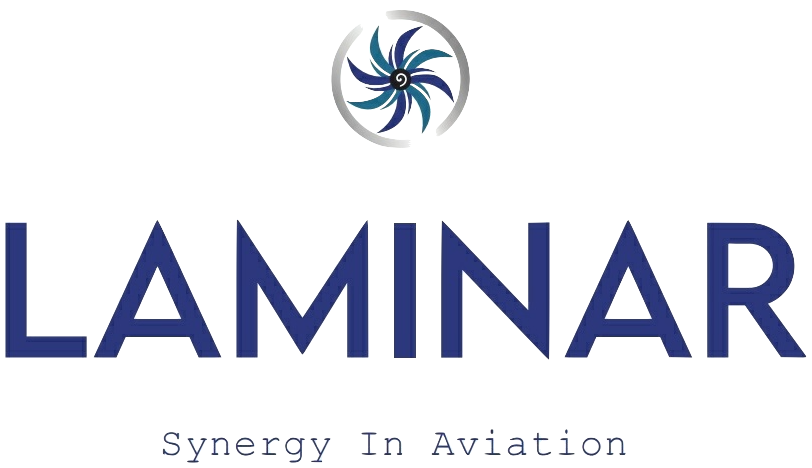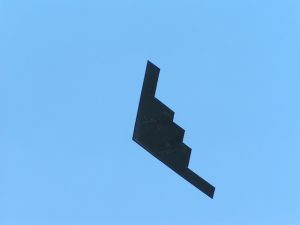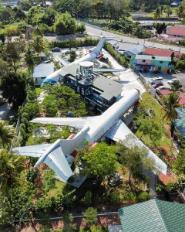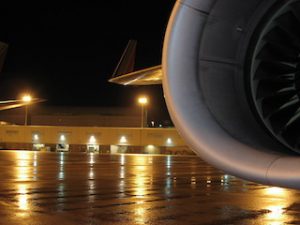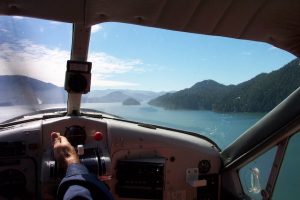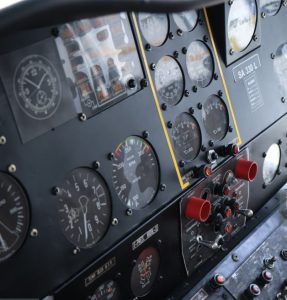Addressing The Global Pilot Shortage: The Role Of MCC, APS, And JOC Programs
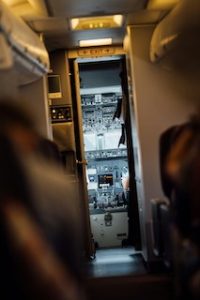 The aviation industry is facing an imminent challenge: a significant global shortage of new entry pilots. Boeing has been vocal about this impending crisis, predicting a shortfall that traditional pilot training routes and structures will struggle to address. To mitigate this shortage, innovative training programs such as the Multi-Crew Cooperation (MCC), Airline Pilot Standard (APS), and Jet Orientation Course (JOC) offered by organizations like Laminar are gaining traction. These programs are tailored to meet the evolving demands of the industry, providing a robust pathway for self-sponsored aircrew to achieve successful employment. This article explores the factors contributing to the pilot shortage, the significance of MCC, APS, and JOC programs in addressing this gap, and the positive outlook for self-sponsored pilots who follow the correct career developmental paths.
The aviation industry is facing an imminent challenge: a significant global shortage of new entry pilots. Boeing has been vocal about this impending crisis, predicting a shortfall that traditional pilot training routes and structures will struggle to address. To mitigate this shortage, innovative training programs such as the Multi-Crew Cooperation (MCC), Airline Pilot Standard (APS), and Jet Orientation Course (JOC) offered by organizations like Laminar are gaining traction. These programs are tailored to meet the evolving demands of the industry, providing a robust pathway for self-sponsored aircrew to achieve successful employment. This article explores the factors contributing to the pilot shortage, the significance of MCC, APS, and JOC programs in addressing this gap, and the positive outlook for self-sponsored pilots who follow the correct career developmental paths.
Global pilot shortage
The aviation industry is experiencing unprecedented growth, driven by increasing passenger numbers, expanding airline fleets, and the emergence of new markets. However, this growth has brought with it a critical challenge: a looming shortage of qualified pilots. Boeing’s forecasts highlight the urgency of the situation, projecting a need for hundreds of thousands of new pilots over the next two decades. This shortage is attributed to several factors:
- Retirements: A significant number of current pilots are approaching retirement age, leading to a substantial loss of experienced aviators.
- Industry growth: The rapid expansion of airlines, particularly in emerging markets, is driving demand for new pilots.
- Training bottlenecks: Traditional pilot training routes and structures are often unable to keep pace with the growing demand, resulting in a bottleneck.
Traditional pilot training path
The traditional pathway to becoming a commercial pilot involves several stages, including obtaining a Private Pilot License (PPL), Commercial Pilot License (CPL), and additional ratings such as Instrument Rating (IR) and Multi-Engine Rating (MER). While this path has been effective, it is time-consuming and often unable to produce the number of pilots needed to meet current demand. Furthermore, the cost and time involved can be prohibitive for many aspiring pilots.
Role of MCC, APS, and JOC programs
In response to the pilot shortage, innovative training programs like MCC, APS, and JOC have been developed. These programs offer a streamlined and focused approach to pilot training, addressing the specific needs of modern airline operations.
Multi-Crew Cooperation (MCC) course
The MCC course is designed to prepare pilots for the multi-crew environment of commercial airline operations. This course emphasises the importance of effective communication, teamwork, and Crew Resource Management (CRM) in a multi-crew cockpit.
-
- Objective: To develop the skills necessary for pilots to operate efficiently and safely as part of a multi-crew team.
- Curriculum: Includes theoretical instruction on CRM principles, standard operating procedures (SOPs), and practical training using flight simulators to practice multi-crew coordination and emergency procedures.
Airline Pilot Standard (APS) course
The APS course builds on the foundation provided by the MCC course, offering advanced training in jet aircraft operations. It is designed to enhance a pilot’s readiness for the complexities of airline operations.
-
- Objective: To prepare pilots for the demanding environment of airline operations, focusing on advanced CRM skills, jet aircraft systems, and high-speed aerodynamics.
- Curriculum: Includes detailed theoretical instruction on advanced CRM, jet systems, and international regulations, along with extensive simulator training in realistic flight scenarios.
Jet Orientation Course (JOC)
The JOC is specifically tailored for pilots transitioning from propeller-driven aircraft to jet aircraft. It focuses on the unique handling characteristics and operational requirements of jets.
-
- Objective: To equip pilots with the essential skills and knowledge needed to operate jet aircraft safely and efficiently.
- Curriculum: Covers jet aerodynamics, engine performance, advanced flight planning, and extensive practical training using jet flight simulators.
Impact of MCC, APS, and JOC programs on the pilot shortage
The MCC, APS, and JOC programs offered by organizations like Laminar are playing a crucial role in addressing the global pilot shortage. Here’s how these programs are making a difference:
Accelerated training
These programs offer a more streamlined and focused approach to pilot training, reducing the time required to become fully qualified. By integrating advanced training techniques and simulator-based instruction, pilots can achieve the necessary competencies more efficiently.
Enhanced skills and readiness
The comprehensive training provided by MCC, APS, and JOC courses ensures that pilots are well-prepared for the demands of modern airline operations. These programs focus on developing advanced CRM skills, proficiency in jet aircraft systems, and the ability to handle high-pressure situations, making pilots more attractive candidates for airlines.
Meeting industry standards
The MCC, APS, and JOC programs are designed to meet the highest industry standards, ensuring that pilots are equipped with the skills and knowledge required by international carriers. This alignment with industry needs makes these programs highly regarded by airlines and regulatory authorities.
Growing demand for self-sponsored pilots
Despite the daunting nature of pilot training, the demand for qualified self-sponsored pilots remains strong. Airlines are increasingly looking for candidates who have taken the initiative to complete advanced training programs like MCC, APS, and JOC. This trend is driven by several factors:
Flexibility and adaptability
Self-sponsored pilots who have completed these advanced training programs are often seen as more adaptable and ready to meet the demands of modern airline operations. Their proactive approach to training demonstrates a commitment to their career and a willingness to invest in their professional development.
Reduced training burden on airlines
By hiring pilots who have already completed MCC, APS, and JOC training, airlines can reduce the time and resources needed for in-house training. This allows airlines to focus on other aspects of pilot development and integration.
Enhanced employability
Pilots with MCC, APS, and JOC certifications are highly sought after by airlines. These qualifications signal a high level of competence and readiness, making self-sponsored pilots more competitive in the job market.
Career development pathways for self-sponsored pilots
While the path to becoming a commercial pilot can be challenging, following the correct career developmental pathways can lead to successful employment and career advancement. Here’s how self-sponsored pilots can navigate their journey:
Step 1: Obtain basic qualifications
The first step is to obtain a Private Pilot License (PPL) and a Commercial Pilot License (CPL), along with additional ratings such as Instrument Rating (IR) and Multi-Engine Rating (MER). These qualifications provide the foundational skills needed for advanced training.
Step 2: Complete MCC, APS, and JOC training
After obtaining basic qualifications, pilots should enroll in MCC, APS, and JOC courses. These programs provide the advanced training necessary for modern airline operations and enhance a pilot’s employability.
Step 3: Gain experience
Gaining experience is crucial for career advancement. Pilots should seek opportunities to build flight hours and gain practical experience in various operational environments. This can include working as a flight instructor, charter pilot, or in other commercial aviation roles.
Step 4: Apply for airline positions
With advanced training and experience, pilots can apply for positions with regional and international airlines. Having MCC, APS, and JOC certifications will make them highly competitive candidates.
Step 5: Continuous professional development
Aviation is a dynamic industry, and continuous professional development is essential. Pilots should stay updated with industry trends, regulations, and advancements in technology. Pursuing additional certifications and training can further enhance career prospects.
Positive outlook for self-sponsored pilots
Despite the challenges, the outlook for self-sponsored pilots remains positive. The aviation industry’s demand for qualified pilots continues to grow, and those who have invested in advanced training programs like MCC, APS, and JOC are well-positioned for success. Here are some reasons for optimism:
Industry growth
The aviation industry is expected to continue its growth trajectory, driven by increasing passenger numbers and the expansion of airline fleets. This growth will create numerous opportunities for pilots.
Airline preferences
Airlines are increasingly recognizing the value of pilots who have completed advanced training programs. The comprehensive skills and readiness provided by MCC, APS, and JOC courses make these pilots highly attractive candidates.
Career advancement
Pilots who have completed MCC, APS, and JOC training are better positioned for career advancement. These qualifications provide a competitive edge, opening doors to senior positions and leadership roles within airlines.
Attend Laminar courses
The global pilot shortage is a pressing challenge for the aviation industry, but innovative training programs like the MCC, APS, and JOC courses offered by organizations like Laminar provide a viable solution. These programs address the specific needs of modern airline operations, offering a streamlined and focused approach to pilot training.
For self-sponsored pilots, the demand for qualified aircrew remains strong. By following the correct career developmental paths, including obtaining MCC, APS, and JOC certifications, self-sponsored pilots can enhance their employability and achieve successful employment in the aviation industry.
The aviation industry’s growth, coupled with the increasing recognition of advanced training programs by airlines, creates a positive outlook for self-sponsored pilots. With the right training and dedication, aspiring pilots can navigate the challenges and seize the opportunities in this dynamic and rewarding field.
